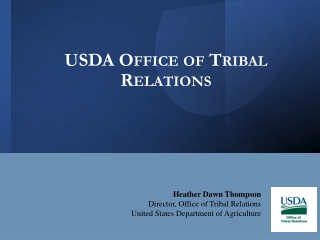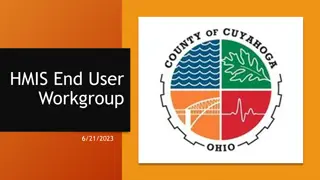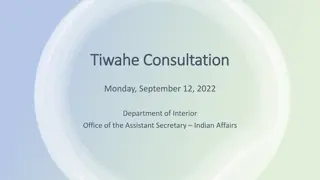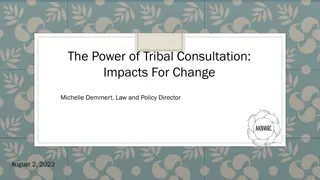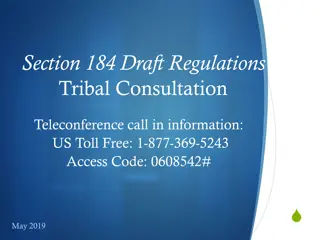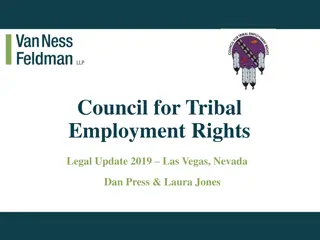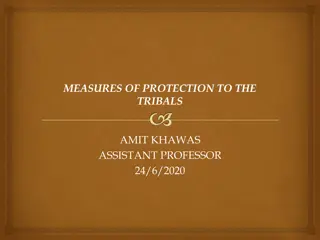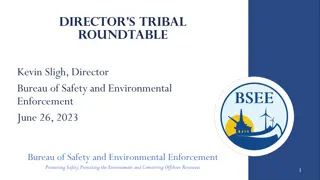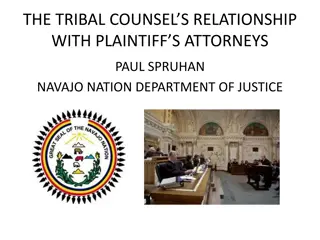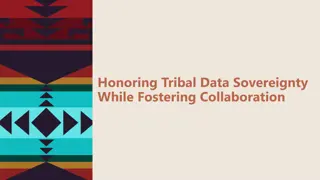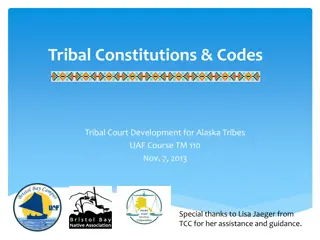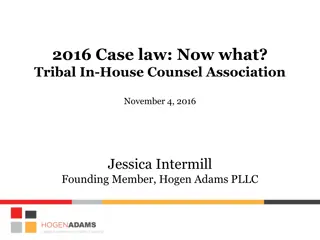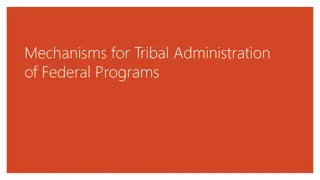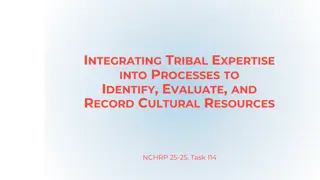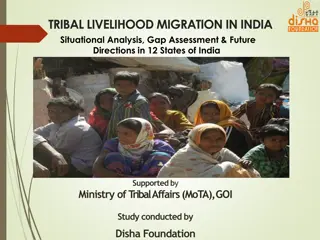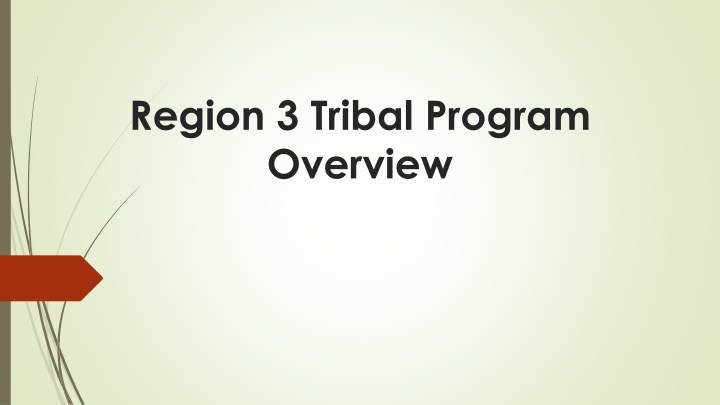
Region 3 Tribal Program Overview and Federally Recognized Tribes Information
Explore the Region 3 Tribal Program with insights on Native lands, Chesapeake origins, federally recognized tribes like Pamunkey, and the Thomasina E. Jordan Indian Tribes of Virginia. Learn about the government structure and key details about these tribes.
Download Presentation

Please find below an Image/Link to download the presentation.
The content on the website is provided AS IS for your information and personal use only. It may not be sold, licensed, or shared on other websites without obtaining consent from the author. If you encounter any issues during the download, it is possible that the publisher has removed the file from their server.
You are allowed to download the files provided on this website for personal or commercial use, subject to the condition that they are used lawfully. All files are the property of their respective owners.
The content on the website is provided AS IS for your information and personal use only. It may not be sold, licensed, or shared on other websites without obtaining consent from the author.
E N D
Presentation Transcript
Region 3 Tribal Program Overview
What we will cover Recognition of Native Lands and Chesapeake Name Origin Region 3 Tribes Snapshot 3 Pillars of EPA Tribal Work
Native Land and Chesapeake Origin Nations that inhabited and still inhabit Annapolis region Susquehannock Piscataway Nentego (Nanticoke) (https://native-land.ca/) The namesake for our Bay could stem from a variety of places. The word Chesepiooc is an Algonquian word referring to a village "at a big river." The name Chesapeake may refer to the Chesepian or Chesapeake people, a Native American tribe who inhabited the area surrounding what is now known as Hampton Roads, Virginia. While some believe "Chesapeake" means something like "great shellfish bay," Algonquian linguist Blair Rudes says it doesn't. Per Rudes, it more likely means something like "great water," or it may have referred to a village at the Bay's mouth. -Chesapeake Bay Foundation Blog Post, Rebecca Long, November 2018 https://www.cbf.org/blogs/save-the-bay/2018/11/defining-the-chesapeake.html
Region 3 Federally Recognized Tribes Pamunkey Indian Tribe Federally recognized in January 2016 Reservation is 1,200 acres large Around 30 residences on the land
Thomasina E. Jordan Indian Tribes of Virginia Federal Recognition Act of 2017 Nansemond Indian Nation Chickahominy Indian Tribe Suffolk, VA Rappahannock Tribe Providence Forge, VA Chickahominy Indians Eastern Division Indian Neck, VA Upper Mattaponi Indian Tribe Providence Forge, VA Monacan Indian Nation King William, VA Amherst, VA
Thomasina E. Jordan Indian Tribes of Virginia Federal Recognition Act of 2017 Signed into law on January 28, 2018 Land holdings range between 40 acres to a few hundred acres Citizen enrollment between a few hundred and several thousand No residency on any tribal lands No permitted facilities on any lands
Working with our Tribal Partners Government Structure Chief, Council elected positions (executive and legislative powers) Tribal Administrator handles Tribe s day to day business (nonpolitical) Government Departments Housing, Health, Finance, Cultural Preservation, Education, Environment Council has monthly or bi-weekly meetings Sovereign Nation Status
Working with our Tribal Partners (cont) Small organizations Limited funding or resources Inundated with inquiry requests Navigating new federal recognition Interests: Environmental Protection 101 State and Federal regulatory process Water quality Fishing Recreation Climate Change impacts Community outreach and education to Citizens Indoor and outdoor air quality
Federal Trust Lands Upon federal recognition, Tribes have an option to move their land into federal trust Land in trust is a special status in which; The federal government holds the title to the property Allows the Tribe to make its own decisions on how to develop the tax-exempt land and its natural resources No R3 Tribe has their land in federal trust No R3 Tribe has any permitted facilities
Three Pillars of EPA Tribal Work Grants General Assistance Program Grant Grants - Water, Air, Brownfields, Superfund Grants Lands must be held in federal trust to qualify for some of these grants
General Assistance Program Grants All 7 Tribes have received GAP Grants GAP is noncompetitive and all Federally Recognized Tribes are eligible to receive Individual GAP grants can be awarded up to $110,000 annually Eligible activities include; Salary for Environmental Director (6 active Enviro Directors) Purchase Supplies and Equipment Solid Waste Disposal Community Outreach and Events Environmental Capacity Building
Three Pillars of EPA Tribal Work Technical Assistance Every federally recognized tribe is eligible for technical assistance from EPA Water quality monitoring advice, guidance and assistance Land ecological assessments
Three Pillars of EPA Tribal Work Consultation EPA s policy is to consult on a government-to-government basis with federally recognized governments when EPA actions and decisions may affect tribal interests. Regulations or rules Policies, guidance documents, directives Budget and priority planning development Legislative comments Permits
Regional Tribal Operations Committee (RTOC) Committee comprised of EPA and representatives of the Region s federally recognized Tribes Purpose is to create communication and collaboration between the Region and the Tribes Meets monthly
Regional Tribal Team Divison RTT Member OCTEA ARD LCRD LSASD MSD ORC SEMD WD CBPO Brian Hamilton Janice Bolden Donna Weiss Norm Rodriguez Matt Creedon Daniel Isales Lisa Denmark Pat Gleason Lucinda Power
Office of Communities, Tribes and Environmental Assessment (OCTEA) Brian Hamilton Tribal Coordinator Hamilton.brian@epa.gov Samantha Phillips Beers Director beers.samantha@epa.gov 215-814-2627 215-814-5497

